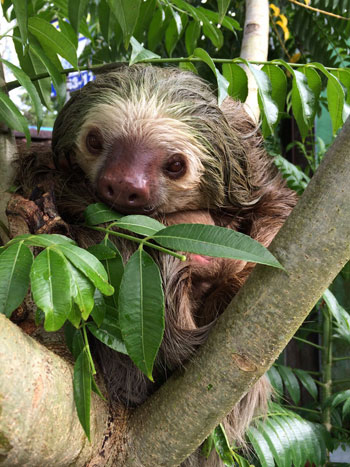The Two-Toed Sloth
Sporting a longer snout than the three-toed sloth, as well as a larger stature and one less intimidatingly large curved claw on its front foot, the two-toed sloth spends most of its life in the trees and is most active at night. Active is a relative term here, as the sloth moves in relation to the energy it gets from its low carb diet of leaves, typically at a pace of around half a foot per second at a good clip. Its slow, deliberate, often acrobatic movements, paired with a shaggy coat that actually encourages the growth of algae, help this beautiful animal avoid detection from predators and enjoy its daytime naps peacefully in the canopy.





